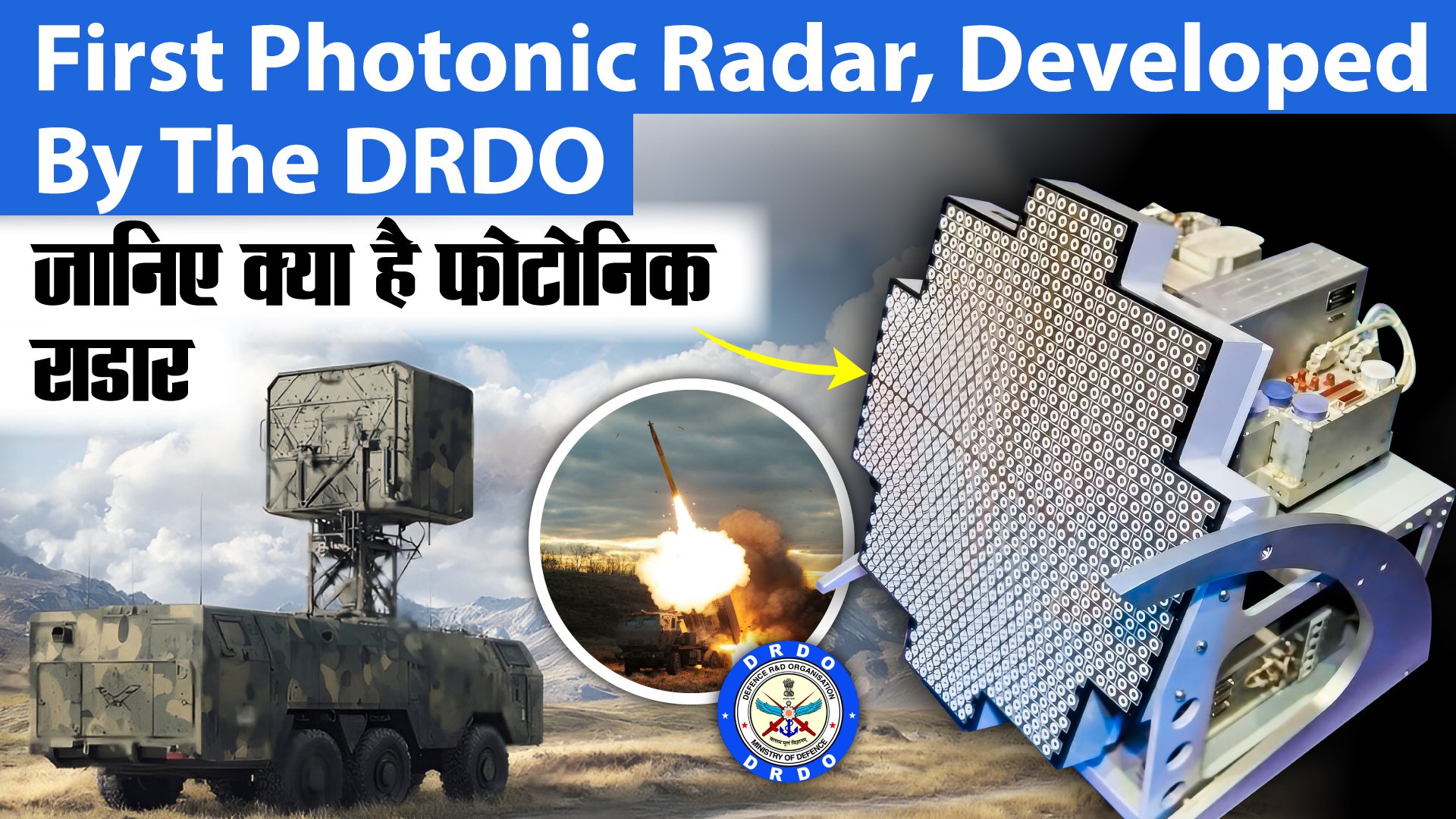In a significant technological leap, the Defence Research and Development Organisation (DRDO) has successfully developed India’s first indigenous Photonic Radar, marking a transformative moment in both defence and civilian radar applications.
DRDO Developed First Photonic Radar
India’s First Indigenous Photonic Radar: DRDO’s Breakthrough in Advanced Radar Technology
In a significant technological leap, the Defence Research and Development Organisation (DRDO) has successfully developed India’s first indigenous Photonic Radar, marking a transformative moment in both defence and civilian radar applications. This development positions India at the forefront of next-generation radar innovation, with the potential to revolutionize surveillance, tracking, healthcare, and consumer electronics.
What is Photonic Radar?
Unlike traditional radar systems that use electronic signals, photonic radar leverages light-based (photonic) technology to generate and process radar signals. This allows for much higher bandwidth and superior resolution, enabling the radar to detect and identify even the smallest of objects with remarkable precision.
Key Features and Capabilities
At the core of DRDO’s photonic radar is the use of lasers to generate microwave signals. These signals, operating with an impressive bandwidth of 11 GHz centered at 34 GHz, allow the system to deliver exceptionally high resolution. While the system operates with photonic components at high frequencies, its electronic components function at much lower frequencies (40–80 MHz), simplifying the architecture and reducing costs.
- High Resolution: The radar can achieve a resolution as fine as 1.3 cm, allowing it to image objects as small as 3 x 4 cm.
- Motion Detection: In real-world tests, the radar has successfully detected moving objects such as commercial drones, including rotating drone blades, a feat difficult for conventional radars.
- Enhanced Signal Processing: The photonic approach enhances data transmission speed, bandwidth, and target clarity, crucial for identifying stealth objects and working in cluttered environments.
Developed by DRDO’s LRDE
The Electronics and Radar Development Establishment (LRDE), a DRDO lab, is leading the charge in developing this cutting-edge system. The lab has focused on:
- Simulation and modelling
- Software and firmware development
- Testing of photonic modules at both module and sub-module levels
These efforts ensure that the photonic radar can be seamlessly integrated with existing radar platforms and undergo comprehensive validation before operational deployment.
Civilian and Future Applications
Beyond defence, the radar holds promise for non-invasive vital sign monitoring, with upcoming trials involving cane toads and eventually human subjects. The system’s compact design paves the way for potential integration into consumer devices like smartphones, expanding its application into healthcare and smart electronics.
Towards Quantum and Neuromorphic Advancements
This achievement also aligns with DRDO’s broader strategic vision. The organization is actively researching:
- Quantum communication and computing
- Neuromorphic computing for real-time processing of vast sensor data
These areas will support next-generation technologies where photonic and quantum systems converge, enabling advanced surveillance, AI-driven defence systems, and autonomous platforms.
Conclusion
DRDO’s indigenous photonic radar is a technological milestone that showcases India’s growing capability in high-end defence research. With ongoing testing, refinement, and integration, this innovation not only promises to enhance national security but also opens up new frontiers in civilian applications.
As India steps into the era of photonics and quantum innovation, the photonic radar stands as a testament to DRDO’s role in shaping a self-reliant and technologically advanced future for the country.




















